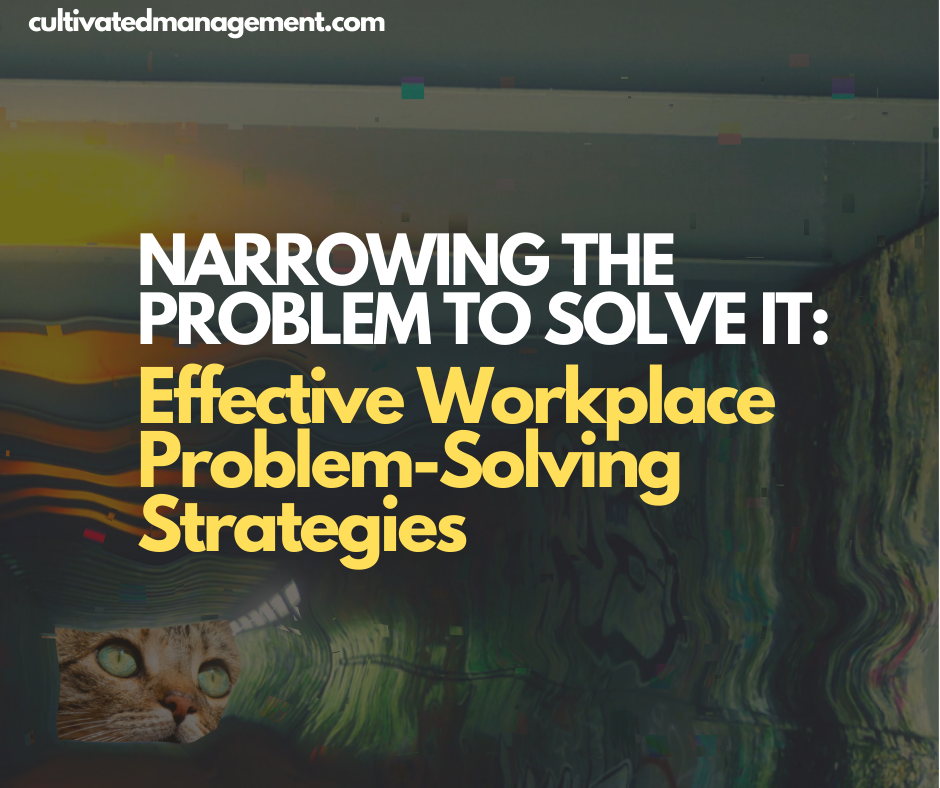
Solve the Right Problems to Drive Business Agility
For anyone working in business, one truth stands out: there are always more problems than you can ever solve.
The challenge is knowing which problems are worth your time, energy, and attention. Solving the wrong problems — or only treating symptoms — can waste resources, frustrate your team, and slow down your progress toward meaningful goals.
The key to business agility isn’t just solving problems — it’s solving the right problems in the right way. Here’s a structured approach to help you do just that.
Only Solve Problems That Matter
A general rule of thumb: focus on problems that are aligned with your goals and the painted picture for your team or organisation. If your direction isn’t clear, any problem could feel urgent, but not all problems contribute to meaningful progress.
By prioritising problems that directly support your “painted picture” or strategic objectives, you conserve energy and ensure that your efforts have lasting impact.
Persistent Problems Reveal Deeper Issues
If a problem keeps resurfacing, it’s a sign you haven’t fully solved it. Often, repeated issues are symptoms of a deeper root cause. Easy-to-solve problems might seem productive to tackle, but if they require constant management intervention, they indicate a gap in delegation or a systemic weaknesses. Addressing these deeper problems is where true growth and agility come from.
Study the Problem Thoroughly
Systemic problems — those that cross functional boundaries or have lingered for months or years — require deliberate study. Staple yourself to the problem and observe its effects. Gather data, evidence, and insights from those experiencing it firsthand.
Engage your team in the process. They often have the clearest perspective on the problem and can contribute to crafting meaningful solutions.
Name It and Visualise It
Once you’ve collected insights, narrow the problem down until it has a clear identity. Give it a name, define it, and make it tangible if possible.
In my Vending Machine workshop, for example, we create a physical “product” representing each problem. We give it a slot, a description, and evidence to support it. This makes problems concrete, discussable, and solvable. You don’t have to use a vending machine — posters, diagrams, or simple documentation work too — but the key is to make the problem visible.
👉 Ready to move faster towards your business goals while building a workplace people love? I help managers and leaders get there—through coaching, consulting, and training. See how I can help you.
Break It Into Actionable Steps
Large, systemic problems are often overwhelming. The trick is to break them into smaller, manageable pieces. Solve one piece at a time, track progress, and adjust as you go.
For example:
- Low engagement scores? Narrow down to poor management, unclear team objectives, or ineffective communication.
- Delivery delays? Focus on individual stages or resources, resolving one bottleneck at a time.
- Customer churn? Address one contributing factor at a time, like onboarding or service quality.
Each solved piece builds confidence and momentum, making it easier to tackle the next strand.
Knowledge Comes First
You can’t solve a problem you don’t understand. Gather insights, study data, and question assumptions before rushing to a solution. Strong opinions aren’t enough — you need evidence, facts, and observations to guide effective action.
Solve Problems That Advance Your Goals
Finally, ensure that every problem you solve contributes to your team’s broader goals. Even with the best approach, solving irrelevant problems won’t drive business agility. The focus should always be on progress toward the bright future you’ve defined.
In summary:
- Solve problems aligned with your goals.
- Investigate persistent problems—they reveal root causes.
- Study and involve your team.
- Name and visualise problems.
- Break problems into actionable steps.
- Gather knowledge before acting.
- Focus on problems that advance your vision.
By approaching problems systematically, prioritising what matters, and solving issues in manageable steps, you create not just solutions — but momentum, confidence, and real agility in your organisation.
